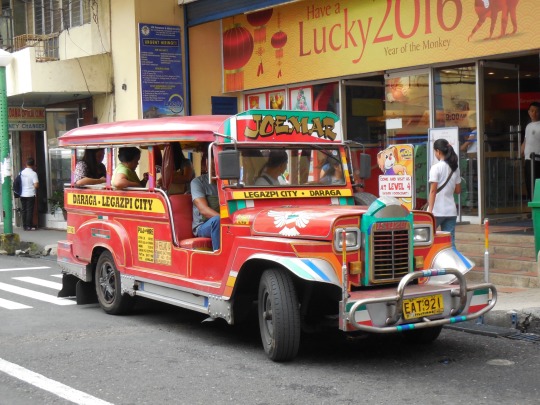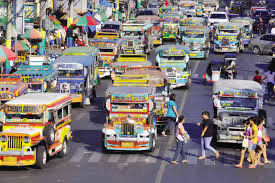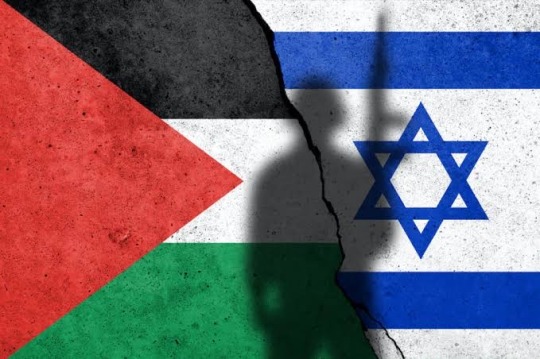Don't wanna be here? Send us removal request.
Text
Message Para sa jeepney Drivers

KARAPATAN NG JEEPNEY DRIVER
AY IPAGLABAN DAHIL BAHAGI
SILA NG ATING BAYAN
SINILANGAN .

#NO_TO_JEEPNEY_PHASEOUT
WAG ITIGIL KA BUHAY NG TSUPER!!

0 notes
Text
Five Poem
Force of Circumtance / Santong Paspasan
author: Jose F lacaba
literary criticism; Femenism
The poem literary criticism is feminism because it's showing about the girl who forced by son of a congressman.
Night of Construction worker / Gabi ng isang pryon
author: Lamberto E, antonio
Literary criticism: psycho analytic, The poem literary criticism is psychoanalytic because it tells about charactestate, the reason why the author wrote this is because to open the people's mind or how our country's workers suffered from working.
On the death of a newspaper delivery boy" by lamber to E. Antonio if the poem literary criticism is post in moderism because it's emerged in the middle of the 20th century
Mareng mensiya
Author: Fanny A. Garcia
the literary used is femenism because it is all about mareng mensiya the fristony of a policeman.
0 notes
Text
Equality
it is all about tragedy or use the poem to voice their justice.now that i gathered this information when i read it.it is all about the people specifically the black people who are hoping for the equality and give them justice to be peace,i've also read that they are saying that they know the past and they're trying to voice out what they know since then which is in the past when it came from or roted it's really hard for them to face the people who are judging just because of their color we as a people should have rights.and freedom to walk around have some fun in the world in this poem i thought that they are just bird who are in cage that wants to be free but there are wall that cant break to be free.they are hoping for the personel who has power interms for this situation to hear their voice and thoughts.they also saying that "equality,and i will be free"this one stanze in the poem interface that equality to all people.white or black will be or should be equal in everything that we should break the bounderist and be the one to equality.free from judgement even in other aspect so equality is really needed even in our situation on our country.the author also give way to portray's the people who are hoping for justice by using "we" in the poem .it uses by the author for the people to inpersonate it through the poem.the author succed to pursue us of what is the truly agenda of this poem.i know some of the reader might feel what i feel right now when i read this.this poem are really making me cry because this poem represent that the world is really cruel and we should fix it.it really affect on me it just open my eyes of what social is all abouy and what they been through.through the past year or since then even if Equality is crucial, but black people have long faced unfair treatment. This essay explores their ongoing struggle for justice, highlighting key moments, challenges, and the journey toward a more inclusive society.Standing together for equality is a shared responsibility that transcends individual differences. By acknowledging historical, addressing persistent challenges, and taking concrete steps towards empowerment, we contribute to an ongoing journey towards a society where every individual, regardless of background, stands on equal ground, fostering an environment of justice and equality.
0 notes
Text
Women of wonder's
The Beauty pageant is all about for women but also for gays who want to do it. This is not all about gender is all about women empowerment and ability that they also have the ability to do men’s work. And let’s not underestimate women because they also have the ability to do mens work and let’s not understimate women because they also have the ability that men who are poor can do, let’s not let them lose their strength women feel that they can’t do anything but stay at home because they have the ability, we should respect women and other genders because it’s not just, because they want it that’s what they feel in their hearts so let’s not understimate or judge them the women lets fight and defend them,
0 notes
Text
MINSAN MAY ISANG PUTA
By Mike Portes
The story of minsan may isang p*ta by mike portes is well known in our country and based on my gathered information about this story is his book was publish on november 22,2014. it is published at Central boo,supply incorporated(language) Filipino,the story hasa symbolic it symbolize the pain and suffering of a woman that interface by our homeland which is the philippines the main character here is a girl named pilipinas at first i was amaze by her name because it has connect on our homeland which is the philippines.base on what i read it is like reality because i know the story or her story can relate on our society what i mean is a toxic sorrounding, toxic people around us,judger,gossiper and other term that affect our social well being.if you really read the story somehow you will felt a lot of emotions like mix emotion because for me i felt sad,angry anxious,lonelyness,tired but most of it i feel sad for her if we base it on our society right now this story and content are constracting the people on our society who are judger and other children of the parents are like felt sad that even she give all of this but her children refuse to be with her.she do all this things things for her children,she do all of this for them and then suddenly they turning their back like nothing happen and they dont have a mother who care and give them all to make them survive and happy to provide their needs its so painful to bring for her and abandon her all her want is to be with them.give all them what they want and deserve but all they give back is nothing and just left her behind she does'nt deserve it.the way he(author) wrote this is through symbolic that connected to each other .this story open our eye's and to make us realize what is to be like when our parent are working this story just symbolize our love ones who are working for give and support our needs in life this story make everybody realize something.lets go to the plot of the story(story)it is started when people shaming her at the story because of her status in life ,but they did'nt know that she was a victim of a rape it repeated 3 times but she didnt forget this third person who raped her which make her pregnant repeatedly and the foreigner abuse her by enjecting chemical on her body .she do prostitute because of her children she said that everything is alright as long as she have a money for her children but later on she decide to cut her connection on the man because it is bad for her so to have a money she continue her career on being a prostitute to have money for her kids but time goes by her children grown up and abandon her because they have their self that they can stand now on their own they dont need their mother now and they go to the different country while the other stay because they need their mother financially.she felt sad because she do all of this for her children and then suddenly they leave her as the mother she always wishing that somehow they comeback and take care of her and gibe her attention. Base on the story her children are fighting to each other its just like they didnt know eah other as if they are not siblings and for me it was sad because we all know that time goes by siblings should by side no matter what happen but in the story it is not right.The story presents the status of the people who are greed,poverty and issues behind it,in conclusion the story give us the story what we should see.the story open our eye tha main is or highlight is the main character are experiencing mental inbalance "suffering in pain"it somehow refers on real life
0 notes
Text
ISRAEL AND PALESTINE WAR BEGIN
—The Israeli-Palestinian dispute is one of the most complex and insistent tensions in today’s world order. The’ war’ between the government residents of Israel and the Palestinian Stateless people is now part of an extremely violent and warped environment. The Israelis-Palestinian relationship is profoundly complex and therefore without a simple explanation or solution. The lack of a single answer has made it difficult for others to grasp the disagreement. Anybody who tries to analyze the problem typically does too many inquiries and not enough responses. This paper aims at defining the main characteristics of the dispute. Throughout the explanation of how Jewish-Arab connections have been changed and influenced by the circumstances throughout Israel and Palestine, the paper takes into account the historical and contemporary dimensions of conflict.

•History of Israel and Palestine conflict
—the war between israel and palestine—
which started in the early 20th century, is the current dispute between Israelis and the Palestinian people. There is a large rivalry between Zionist Jishuv and the Arabs, who are now residing in Palestine below the Ottoman rule, and then British rule, in relation to the early stages of the same dispute. This comes as part of the larger rivalry between Arab and Israel. The main questions remain mutual recognition, security, protection, water rule, Jerusalem command, Israeli settlements, independence of the Palestinian community, and resolution of the refugee problem.
THE "CONFLICT" BETWEEN ISRAEL AND PALESTINE
In mid-May, violence between Gaza and Israel intensified to levels not seen for years, with Hamas shooting hundreds of rockets toward the Tel Aviv area and Israel retaliating with heavy strikes in the Gaza Strip. On May 20, Israel and Hamas agreed to a cease-fire, but during the 11 days of fighting, at least 243 people were killed in Gaza, including 66 children, and 12 people were killed in Israel, including two children.
The buildup to the latest conflagration—some have already called it a new intifada, Arabic for “uprising”—began in a Jerusalem neighborhood near the Old City, close to the Al-Aqsa Mosque, one of Islam’s holiest sites for more than 1,200 years. On May 10, the Israeli police raided the mosque, firing rubber-coated bullets and stun grenades at Palestinians who had been fighting with them the previous night. While Muslims pray at Al-Aqsa year-round, the mosque attracts even more worshipers during Ramadan. May 12 marked the end of Ramadan and the start of Eid al-Fitr, a joyous time at the conclusion of the monthlong fast.
There’s no doubt that the most extreme Jewish nationalists would like Israel to recapture the Al-Aqsa Mosque. They say it sits on top of the ruins of the ancient Jewish Temple, the only remainder of which is the Western Wall. But aside from the setting, faith is only tangentially related to the violence.
THE BORDER OF ISRAEL AND PALESTINE
—The land which would become Israel was for centuries part of the Turkish-ruled Ottoman Empire. After World War One and the collapse of the empire, territory known as Palestine - the portion of which west of the River Jordan was also known as the land of Israel by Jews - was marked out and assigned to Britain to administer by the victorious allied powers (soon after endorsed by the League of Nations).
The terms of the mandate entrusted Britain with establishing in Palestine "a national home for the Jewish people", so long as doing so did not prejudice the civil and religious rights of non-Jewish communities there. The final status and contours of the West Bank, Gaza and East Jerusalem are meant to be decided in negotiations between Israel and the Palestinians living there under Israeli occupation, but decades of on-off talks have so far proved fruitless. The border around the Gaza Strip has grown into a semi-permanent structure with security fences and concrete walls set deep into the ground to prevent tunnelling - after Hamas militants launched a series of raids from tunnels into Israel in 2014. However, Hamas militants again breached the security barriers above ground in the biggest attack of its kind on 7 October, 2023.

"TERRITORY"
Israel’s continuing oppressive and discriminatory system of governing Palestinians in Israel and the Occupied Palestinian Territories (OPT) constituted a system of apartheid, and Israeli officials committed the crime of apartheid under international law. Israeli forces launched a three-day offensive on the occupied Gaza Strip in August during which they committed apparent war crimes. This compounded the impact of a 15-year ongoing Israeli blockade that amounts to illegal collective punishment and further fragments Palestinian territory. Israel escalated its crackdown on Palestinians’ freedom of association. It also imposed arbitrary restrictions on freedom of movement and closures that amounted to collective punishment, mainly in the northern West Bank, ostensibly in response to armed attacks by Palestinians on Israeli soldiers and settlers.
The year saw a rise in the number of Palestinians unlawfully killed and seriously injured by Israeli forces during raids in the West Bank. Administrative detentions of Palestinians hit a 14-year high, and torture and other ill-treatment continued. Israeli forces demolished al-Araqib village in the Negev Naqab for the 211th time. A further 35 Palestinian-Bedouin towns in Israel were still denied formal recognition and residents faced possible forcible transfer. Authorities failed to process asylum claims for thousands of asylum seekers, and imposed restrictions on their right to work.
RESOURCES
—The conflict in the Middle East has always had natural resources in its background: land, water and oil. Strategists have asserted that the struggle over water might be at the heart of the next round of the Arab-Israeli conflict, while the recent discovery of new natural gas fields has added "fuel to the fire." At the same time, pollution and the environment are clearly cross-border issues.
this special issue of the PIJ, we aim to examine the topic from several aspects, including the legal, political and economic. What are the obligations of an occupying country regarding the preservation and protection of the rights of the occupied people to their own natural resources? To what extent is Israel abiding by international law and treaties, and to what extent is it violating these laws by exploiting the natural resources of the occupied territories? How could these resources be managed under occupation, and how could they be an issue of regional cooperation in a time of peace? How could we address cross-border issues, and how could we build a network of regional cooperation to protect the environment? What are the future prospects to develop, at a time of peace, the shared natural resources for the benefit and prosperity of all the peoples of the region?
The original working title for this issue was "The Natural Resource Challenge in the Middle East: Destructive Conflict or Political Settlement and Sustainable Cooperation." Our goal has been to create a basic resource tool which will serve as a handbook for all in the region and the international community who deal with these issues, as a potential building block for peace and regional cooperation. And of course, at the core of our concerns is the Israeli-Palestinian conflict and how it affects natural resources and the environment in the region.
The 15 articles in the Focus section, written by Palestinian, Israeli and international experts, and the interview with a former Palestinian minister of the environment, explore the sources of conflict that arise in the Middle East around natural resources. They raise questions about how to deal with those natural resources before, during and after concluding a political settlement to the Arab-Israeli conflict, and how to develop a process of cooperation and coordination between regional countries to use those resources as a foundation for political settlement and sustainability.
1 note
·
View note